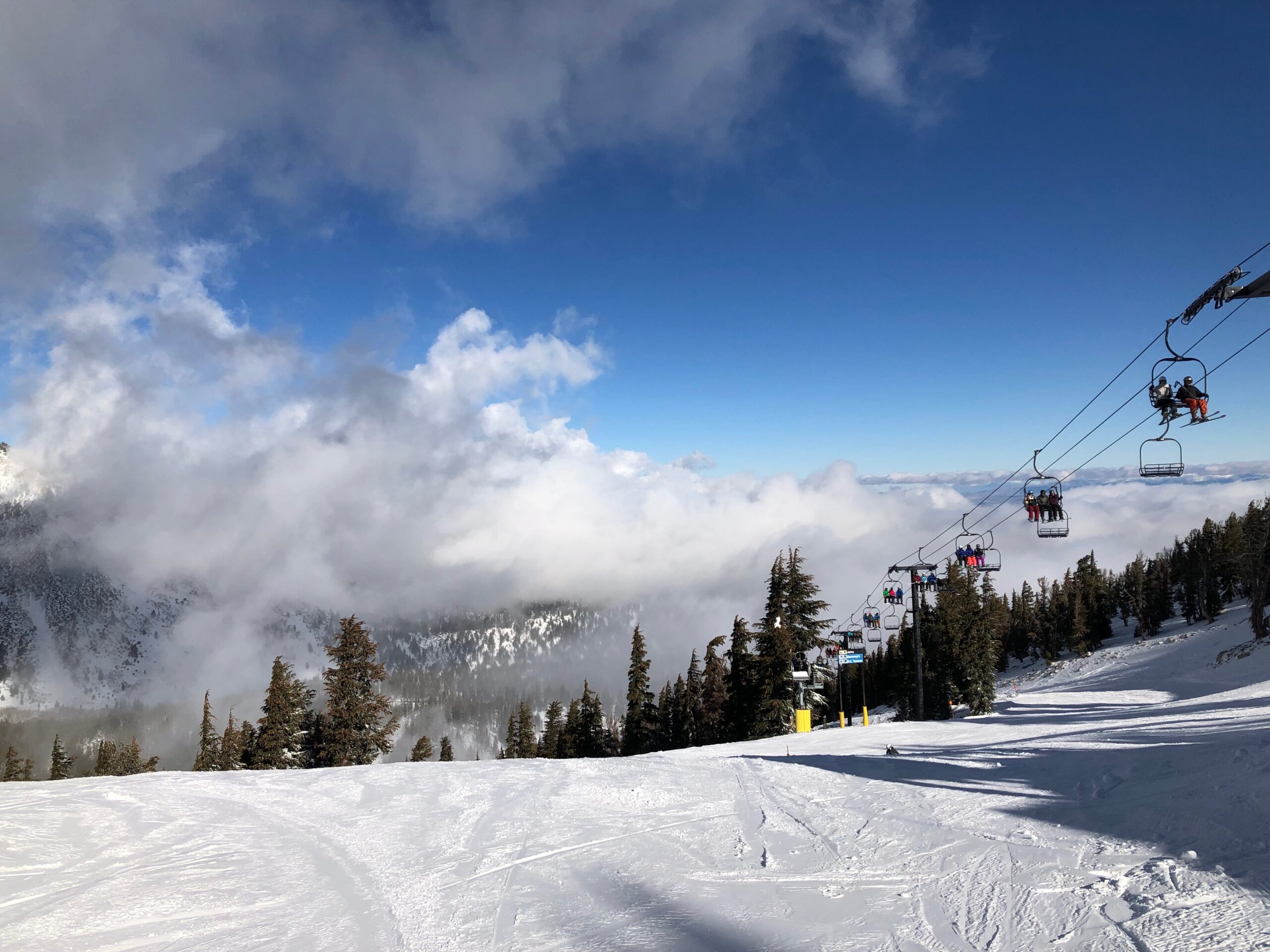OPINION: The future of skiing depends on today’s climate decisions

8,260 feet of elevation doesn’t mean what it used to.
At Mt. Rose-Ski Tahoe we are proud of having the highest base elevation in Lake Tahoe. It’s a figure you’ll see on our logo, on merchandise and throughout the resort. It represents challenging conditions that test even the best skiers. But in recent years, because of climate change, our elevation has taken on a new meaning: a guarantee that there will be snow.
Climate change has upended winter recreation across the country, and our region is no exception. I’ve spent my entire life working in outdoor recreation, and I fear that without meaningful climate action my generation will be the last to experience the joy of a fresh powder day and the thrill of a downhill run.
As the only family-owned ski area in Nevada and one of the last independent resorts in the Tahoe region, we employ more than 800 people and have more than 100,000 unique guests each winter. Unless our leaders in Carson City and Washington, D.C., take bold steps to cut climate pollution, winter recreation will become the province of a privileged few. Even 8,260 feet won’t be enough to ensure that future generations of all upbringings can experience the joy of winter sports.
Nationally, snowfall was below the 10-year average this season, according to the National Ski Areas Association. The unpredictability of snowfall means the ski industry is one inherently built on resilience to snowfall changes and the ability to adapt to weather changes.

However, experiencing back-to-back seasons with a 264-inch (22 feet) difference in snowfall, as the Pacific Southwest region averaged between 2022/2023 and 2023/2024 was especially extreme. Notably, many Tahoe resorts experienced a significant amount of precipitation falling as rain instead of snow this year because of above-freezing midseason temperatures. This is one trend we are noticing that has us concerned about the resilience of future snowpacks.

While our elevation affords some low-temperature protection, we still see fewer days of natural snowfall and fewer freezing nights than we used to. We supplement natural snowfall with man-made snowmaking to ensure that we’ll be able to open in the time frame our guests expect.
Our systems are as efficient as they come, but this is still a costly process that depends on key weather conditions. Snowmaking requires “wet bulb” conditions within a specific range of air temperature and humidity to work effectively, and these conditions are becoming even more rare due to climate change. High wet bulb temperatures that we see more often require more water and electricity to make snow. Unstable cycles of freezing and thawing mean the machines must be run more often. All of this contributes to a vicious cycle of rising costs and rising fees, meaning fewer resorts and fewer participants. Overall, our ski season has become much harder to predict, with negative consequences for our customers, our employees and the regional economy.
While skiing is fun, this is not a game — tens of thousands of jobs and billions of dollars are at stake. Outdoor recreation contributes $1.1 trillion in annual gross economic output and generates $6.1 billion and 54,000 jobs in Nevada. In fact, the National Ski Areas Association found that Nevada is one of only five states that had an increase in skier visits this season. The future of skiing here is alive and well — if we can keep the snow around.
From 2000 to 2019, the U.S. ski industry lost $5 billion due to climate change. By the 2050s, these losses could reach $1 billion annually, threatening not only the ski industry but also the local economies that depend on winter tourism. When folks come to ski they don’t limit themselves to the mountain. They dine in restaurants, stay in hotels and explore all that Washoe County has to offer.
And the threat is not limited to winter. Many ski resorts have expanded summer offerings, including hiking, zip lining and mountain biking, to compensate for the increasing uncertainty in winter. But those are also at risk due to extreme weather that is fueled by climate pollution, whether that’s extreme heat or wildfires.
More than dollars and cents, what climate change threatens to take away are the social and mental benefits that come with outdoor recreation. As we’ve seen with the post-COVID boom in demand, there is something in the human spirit that can only be satisfied by the wonders of the great outdoors, of hitting the slopes and gathering by the fire with a group of friends.
What we see at Mt. Rose is that everyone has their “Rose story” — whether it was their first time on skis, a prime powder day, friends made on the mountain or the joy of introducing someone else to the sport, people feel a sense of connection to this place and these mountains. And we want to be good stewards of this special place.
In many ways, it is up to ski resorts to make our operations more sustainable — and we are. Nationally, more than 75 percent of resorts have a clean/renewable electricity goal, with many aiming to reach this goal by 2029. More than one-third of resorts also have a full-time staff member dedicated to sustainability. While resorts are taking necessary steps toward sustainability, even if we could stop all our emissions overnight, there are more forces at play that contribute to climate change — and impact our mountains — beyond what we can do ourselves. How can our business survive in the long-term when even our adaptations to climate change are being wrecked by climate change? More importantly, how can we ensure that future generations can enjoy these mountains?
These questions can only be answered by decision-makers in the statehouse, the governor's mansion, Congress and the White House. President Joe Biden took an important step by finalizing a package of pollution standards that will achieve measurable results in curbing climate pollution and protecting our health and environment. Together with the Inflation Reduction Act, which included significant investments to address the climate crisis, power plant pollution standards are projected to lead to a 75 percent reduction in carbon pollution levels by 2035. Additionally, the Clean Cars standards will cut 7.3 billion metric tons of climate pollution.
That’s a big deal, but we know there’s more to be done. Our mountain can’t go any higher, but our actions can. Let’s aim high with comprehensive policies that reduce climate pollution, support development of clean energy and protect our natural environment. The future of skiing depends on decisions made today.
Greg Gavrilets is the general manager of Mt. Rose-Ski Tahoe.
The Nevada Independent welcomes informed, cogent rebuttals to opinion pieces such as this. Send them to [email protected].
